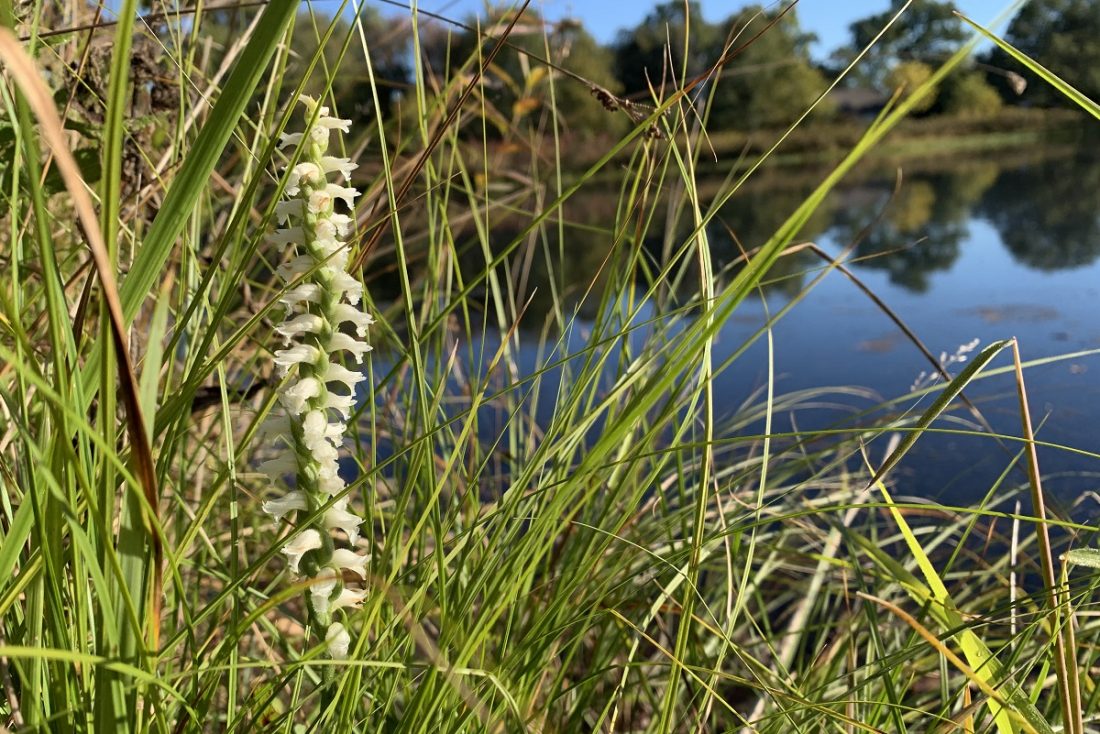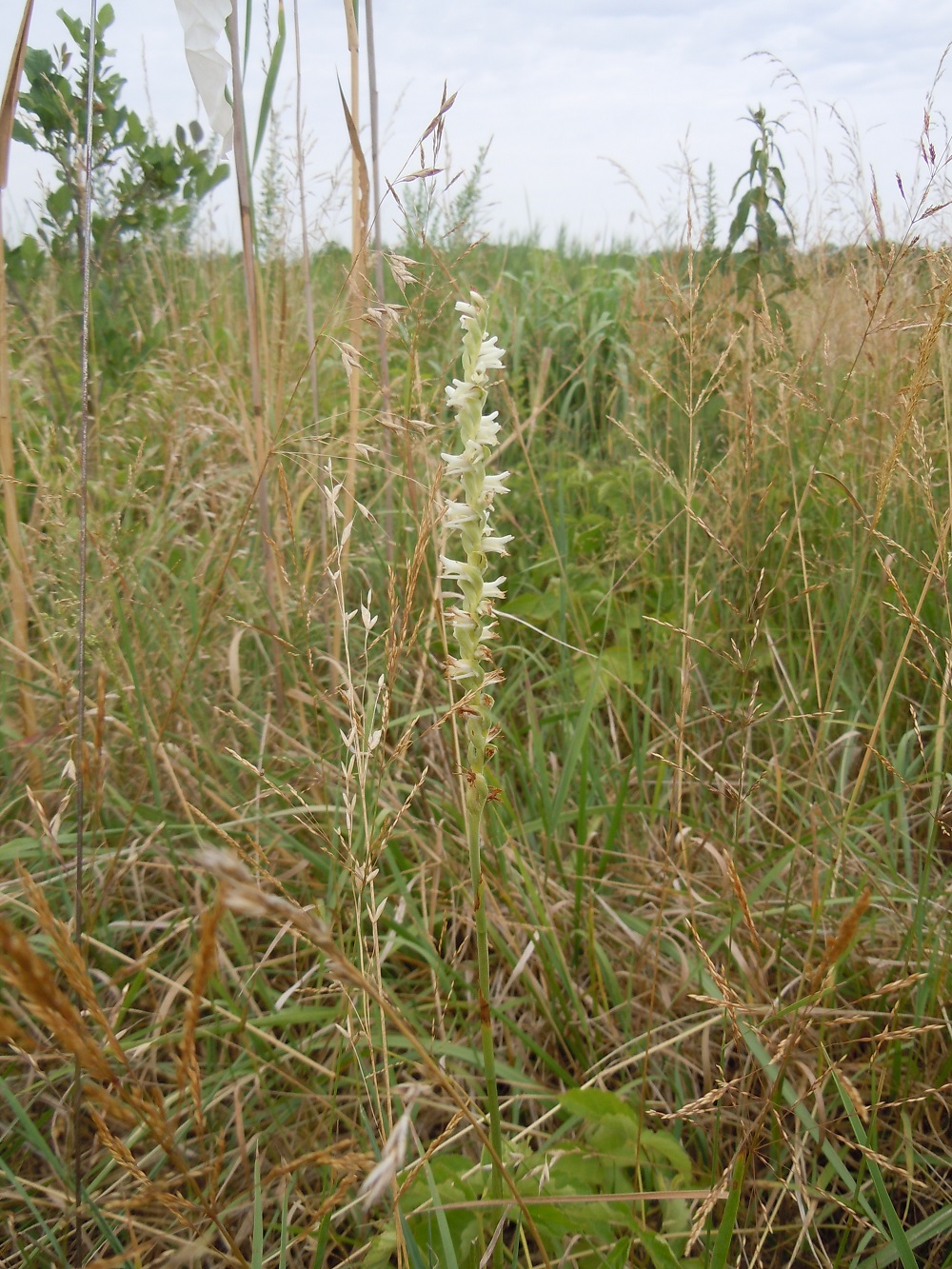
Photo by Sarah Marjanovic



Photo by Sarah Marjanovic
Plants and fungi have a complicated relationship. Those of you who tend indoor plants know that if you overwater your houseplants and there’s not enough air circulation, fungus can quickly attack them. On the other end of the relationship spectrum, some fungi combine their mycelium with tree roots which makes it easier for the trees to take up moisture and nutrients from the soil, with a nice kickback of sugars for the fungi. But it is the relationship between orchids and their fungal associates that captured the attention of Dr. Betsy Esselman. She is a plant systematist and botanist working in the biology department at Southern Illinois University Edwardsville (SIUE). Her career as a professor has been spent working on rare plant species conservation and successfully re-introducing plants to support orchid conservation.
Although her team has collected fungi from orchid roots across the Midwest, I caught up with Dr. Esselman to learn more about her work with spring ladies’ tresses (Spiranthes vernalis) at Pyramid State Recreation Area. My first question for her was: What questions are you hoping to answer with your research?

Dr. Esselman explained that her main interest is the symbiotic relationship between terrestrial orchids and their fungal associates. Something I did not know prior to this interview is that all orchids require a fungal or mycorrhizal associate for their seeds to germinate. She explained that orchid seeds are very small, almost dust-like, which means that they do not have a stored food source like most other seeds to improve their chances of survival. The fungi supply the critical energy needed for the orchid embryos to germinate into seedlings, and Betsy shared that the orchids maintain these mycorrhizal relationships throughout their lives as seedlings and as adult plants.
The Illinois endangered spring ladies’ tresses grow in nutrient poor soil. Growing in low nutrient soil reduces competition from other plant species, but those growing conditions are also tough on the orchids, making the fungal associations essential to the orchid’s survival. Dr. Esselman expanded on this by saying, “The fungi from the Spiranthes vernalis roots at Pyramid State Recreation Area are genetically similar to the fungi that another even more rare prairie orchid uses. This suggests a high-quality fungus that orchids, even beyond S. vernalis, could use for germination and growth. In spite of all the habitat manipulation at Pyramid State Recreation Area, this species and its fungal associate have been able to survive. I think this gives hope that even more species, maybe even more orchid species, have the potential to return and survive at the Pyramid site.”
One glory of fieldwork is that you often have the chance to address multiple questions at once and Betsy’s team has taken advantage of that opportunity. She highlighted that her group has recently expanded their interests from fungi to looking at the complete microbiome of orchid roots. She told me that, “Botanists know little about the complex interactions that orchids form within their habitats. We know fungi are critical for their survival, but orchid roots contain not only fungi, but also bacteria. The next step is to examine everything found in the roots and perhaps identify other organisms essential for orchids’ survival. This could help with the successful replanting of orchids into their natural habitats to increase their numbers.”

Pyramid State Recreation Area also provided her team with an opportunity to observe pollinator activity affecting the spring ladies’ tresses. Pollen must move between plants to produce seed, whether that be accomplished by wind or bee or bird or another pollinator. And this species needs to have pollen deposited from another genetically different individual to produce viable seeds.
Dr. Esselman and her team were interested in seeing if seed set at Pyramid State Recreation Area with more individuals had higher levels of seed set than orchids from smaller populations elsewhere. Unfortunately, that question is still unanswered. The experiment did not work because the flowers were only blooming for about a week in 2021 during the study.
When asked to describe what the management implications of her research are, Betsy reiterated that orchids depend on fungi to continue their life cycles. And since they cannot survive without their fungal counterparts, conservation efforts need to include identification of fungal associates. She explained that, “We have tried experimental seed germination experiments in the lab to try and get new S. vernalis seedlings back into the field. We need to know about the fungal associates to try and accomplish this goal.” Additionally, if fungi from these plants can be established into new areas, they can potentially create new habitat for terrestrial orchid species.
Dr. Esselman’s lab has also been working on understanding native orchid pollination biology. The lab has attempted hand pollinations of flowers to determine if pollen limitation is present and leading to decreased seed set.
My last question for Dr. Esselman was: What is your favorite part about the work that you are doing? She gave a great answer. “All of it! As a professor I get to work with students who are excited about plant conservation and their projects. Orchids are not common plants and we get to work outside and see some remarkable natural areas with beautiful uncommon plants and sometimes unique wildlife. I have often though how privileged I have been to have my job and see these areas.”
To learn more about the plant conservation work happening check out the information on the Esselman lab.
Thanks to Dr. Elizabeth (Betsy) Esselman.
Photos are courtesy of Samantha Roberts, a MS graduate student in the biology department at SIUE.
Laura Kammin is a Natural Resources Specialist with the National Great Rivers Research and Education Center. She formerly held positions at Illinois-Indiana Sea Grant, University of Illinois Extension, Prairie Rivers Network and the Illinois Natural History Survey. She received her master’s degree in wildlife ecology from the University of Illinois, Urbana-Champaign.
Submit a question for the author